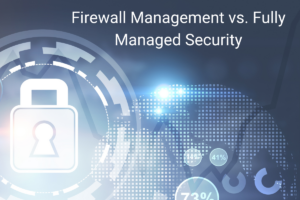The end of support for Microsoft Server 2016 is looming large, with October 14, 2025 marking the final day of extended support. For businesses across New Zealand, this absolute deadline presents a critical juncture, demanding a proactive approach to server replacement and migration. A process notorious for being under estimated.
The Perils of Procrastination
Delaying the server migration process carries substantial risks:
- Heightened Security Vulnerabilities: Operating on an unsupported system leaves businesses exposed to a barrage of cyberattacks. Without security updates, vulnerabilities remain unpatched, creating easy entry points for hackers. This can lead to data breaches, ransomware attacks, and significant financial losses.
- Increased Downtime and Instability: Lack of support translates to a diminished ability to troubleshoot and resolve technical issues. This can result in frequent system crashes, outages, and disruptions to critical business operations, impacting productivity and revenue.
- Compliance Risks: Many industries have stringent regulatory requirements that mandate the use of supported software. Operating on an unsupported system can lead to hefty fines, legal repercussions, and damage to brand reputation.
- Loss of Productivity: Unsupported systems can become increasingly unstable and unreliable, leading to decreased employee productivity and frustration. This can negatively impact business efficiency and overall morale.
Why is IT Infrastructure Management Important?
Delaying the server migration process carries substantial risks:
To avoid these pitfalls, businesses must proactively plan and execute a well-defined migration strategy. Key considerations include:
- Comprehensive Assessment: Conduct a thorough assessment of your current server infrastructure, including hardware and software dependencies.
- Strategic Planning: Develop a detailed migration plan outlining timelines, budgets, and resource allocation.
- Thorough Testing: Rigorously test the new server environment in a controlled environment to identify and resolve potential issues before a full-scale migration.
- Data Backup and Recovery: Implement robust data backup and disaster recovery procedures to minimize data loss during the migration process.
- Comprehensive Training: Provide comprehensive training to IT staff on the new server environment and ensure ongoing support is available to address any issues.
- Enhanced Security Measures: Implement robust security measures to protect the new server environment from evolving cyber threats.
Choosing the Right Replacement:
When selecting a replacement for Server 2016, consider factors such as:
- Performance: Ensure the new server meets the performance requirements of your applications and workloads.
- Compatibility: Ensure compatibility with existing hardware and software.
- Scalability: Choose a server that can grow with your business needs.
- Security: Select a server with built-in security features to protect against cyber threats.
- Support: Choose a server with reliable vendor support and maintenance options.
Don’t Wait for Disaster to Strike.
The Pro´s at iT360 are glad to help, whatever your remaining migration needs might be. Just CLICK HERE to book a call.
You can find the Microsoft products with ending support here.


